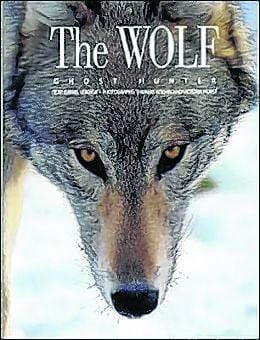Fascinating wildlife book talks about wolves and their world
Posted: Sunday, June 7, 2015 9:45 am
“The Wolf: Ghost Hunter” by Daniel Leboeuf is all about the wolf and his world.
Leboeuf tells us how the wolf has been hated and feared throughout time — more than any other animal in history. In the Middle Ages, Frances I organized a wolf hunt that took place three times a year; this hunt was not dismantled until 1971. In 1500, entire forests were burned to get rid of wolves in England. Wolves were eliminated in Scotland by 1680 and in Ireland by 1770.
The author also discusses the wolf's many impressive traits. They have two coats for instance: a short, thick undercoat and a longer, tougher outer coat. They have 42 teeth which they use as a vise, grasping their prey and not letting go. It's believed that a wolf's jaw can exert over 200 pounds of pressure per square inch. It's also been said that if the wind is in their favor, wolves can smell three deer from 1.5 miles away and they're able to hear and interpret sounds from several kilometers away.
Wolves have a special way of life according to Leboeuf. They mate for life. Their social hierarchy determines which of them will breed.
Wolves' diets change with the seasons: during winter their staple food source is ungulates such as moose, deer, elk, caribou and muskoxen. During the summer months they eat any of a number of smaller mammals such as muskrats, marmots, hares, birds and fish.
A common estimate for pack size is five to eight animals, although in Alaska packs are typically larger, consisting of 20 or more. The majority of wolves prefer the company of others but a few go it alone. When hunting, wolves go after unprotected young, the old and the wounded first, leaving a healthier herd behind. Because hunting is so hard, wolves will return to a larger kill until it has all been eaten. If hunting conditions are good, the leftovers fall to foxes, bobcats, ravens and birds of prey.
» Lee's take: A good book about a fascinating animal.
» J.J.'s take: A good resource for wildlife enthusiasts.
Lee and J.J. MacFadden are twins living in Bristol, Tennesee. Email them at leeandjj.doubletake@yahoo.com or visit their blog at blueowlreviews.blogspot.com.











No comments:
Post a Comment